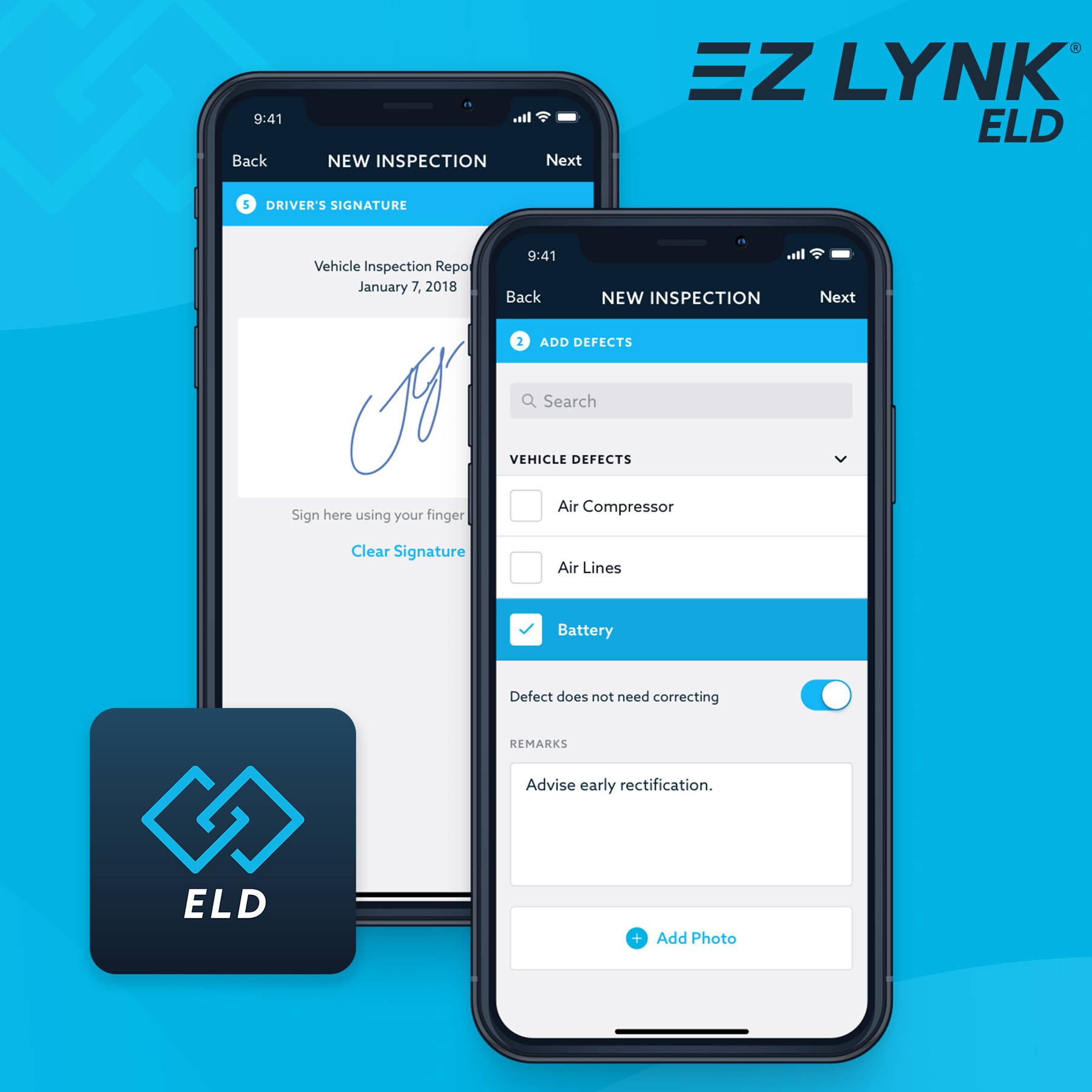
What is a Pre-trip Inspection?
Getting into trucking can be difficult. See how EZ LYNK ELD can help with Pretrip inspections.
Pre-Trip Inspections: A Must for Safe and Worry-Free Travels
Are you a hotshot trucker or owner-operator who frequently hits the road with valuable cargo? Whatever the reason for your journey, one thing is for sure: safety should be your top priority.
Pre-trip inspections are an essential step in ensuring a safe and worry-free journey. They involve thoroughly checking your vehicle before hitting the road to identify potential issues that could cause accidents, breakdowns, or delays.
Skipping pre-trip inspections could lead to serious consequences. You risk getting into accidents or experiencing unexpected breakdowns, which can cause significant stress and impact your schedule. Skipping pre-trip checks can lead to big fines, especially for hotshot truckers who need to follow the FMCSA rules.
There are two types of pre-trip inspections: electronic and manual. Electronic pre-trip inspections typically involve using specialized software or applications to conduct the inspection. Manual inspections, on the other hand, involve physically examining the vehicle and its components.
Who Conducts Pre-Trip Inspections? In What Scenarios are They Required?
Typically, the driver of the vehicle is responsible for conducting pre-trip inspections. They are required in many scenarios, including before departures, at each change of duty status, and when there has been an equipment change. The inspections are also required when the vehicle has been out of service for more than 24 hours, or when the driver suspects that there may be an issue with the vehicle.
Hotshot trucking and owner operators are among the most common industries that require regular pre-trip inspections. This is because they are often transporting time-sensitive or high-value cargos and cannot afford any delays due to vehicle malfunctions.
Pre-trip inspections are essential for ensuring a safe and stress-free journey. Not only do they help prevent accidents and breakdowns, but they are also required by regulations such as electronic logging devices(ELD) service for commercial vehicles. Here is a step-by-step guide on how to conduct a thorough pre-trip inspection:
Step 1: Start with the exterior of the vehicle
Begin by walking around the vehicle and inspecting the exterior. Check for any damage, such as dents or scratches, and ensure that all lights and reflectors are functioning properly. Look for any oil leaks or tire wear, and check the tire pressure. Pay special attention to the brakes, suspension, and steering components.
Step 2: Move on to the interior
Once you have completed the exterior check, move on to the interior. Check that all mirrors are properly adjusted and clean. Ensure that all gauges, such as fuel and oil level indicators, are in good working order. Test the horn and windshield wipers, and ensure that the seatbelts are functioning properly.
Step 3: Check the ELD
For commercial vehicles, it is important to check the electronic logging device (ELD) before each trip. Ensure that the device is properly installed and functioning, and that all required data is being recorded. This will help you avoid violations and fines.
By following these steps, you can conduct a thorough pre-trip inspection and ensure a safe and worry-free journey. Remember, taking the time to conduct pre-trip inspections is an investment in your safety and the safety of those around you.
Compliance with regulations
Pre-trip inspections are a requirement under the federal law. The FMCSA requires pre-trip inspections before each haul. The driver must be satisfied that all parts are in good working order. If not, the vehicle must be repaired before anyone can drive it.
Conducting regular pre-trip inspections is a small investment that can pay off in big ways throughout a driver's journey. Take the time to prioritize safety and ensure compliance by conducting comprehensive pre-trip inspections.
Common Mistakes to Avoid in Pre-Trip Inspections
Pre-trip inspections are an essential part of any safe and worry-free journey. However, even experienced travelers can overlook important details or skip steps that can lead to problems down the road. Here are some common mistakes to avoid when conducting pre-trip inspections:
Overlooking small details: While it may seem minor, checking all lights, reflectors, and indicators is crucial for safe driving. Failure to do so can result in accidents or fines. Take a walk around the vehicle and note any small issues that need attention.
Check fluids and tires: It helps prevent breakdowns and keeps your car running well. Check oil, brake fluid, power steering fluid, and coolant levels. Similarly, inspecting tires for tread depth and proper inflation can prevent blowouts and flat tires.
To ensure a thorough inspection, follow a systematic approach, starting from the outside of the vehicle and working your way in. Use a pre-trip inspection checklist, if available, to make sure you don't miss anything important.
With EZ LYNK ELD, part of its comprehensive subscription options, incorporates a convenient checklist feature for conducting pretrip inspections. This innovative tool serves as an invaluable resource for truck operators, enabling them to meticulously assess the condition of their vehicles before embarking on their journeys.
By utilizing the EZ LYNK ELD checklist, users can efficiently go through a series of crucial inspection points, ensuring that their vehicles meet the required safety standards. This feature not only enhances the overall reliability of the ELD system but also contributes to a heightened level of confidence and peace of mind for enthusiasts, knowing that their pretrip inspections are thorough and comprehensive.
Conclusion
Pre-trip inspections are an essential part of any journey, whether you're a hotshot trucker or an owner-operator or work for a fleet company. Conducting these inspections can prevent accidents, reduce breakdowns, and ensure compliance with regulations. By following a step-by-step guide and avoiding common mistakes, you can conduct a thorough inspection before hitting the road.
So, take the time to inspect your vehicle before each trip, and enjoy a worry-free journey with peace of mind that you're driving safely.
Want more information about EZ LYNK ELD ?




